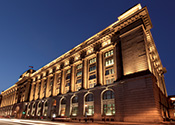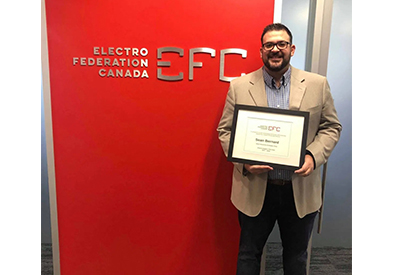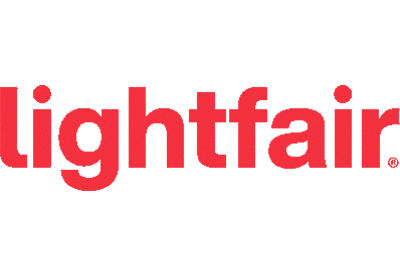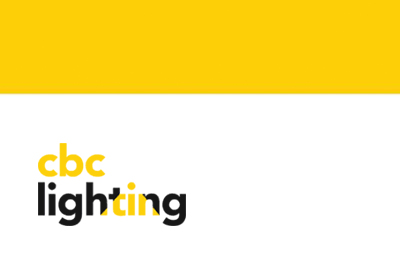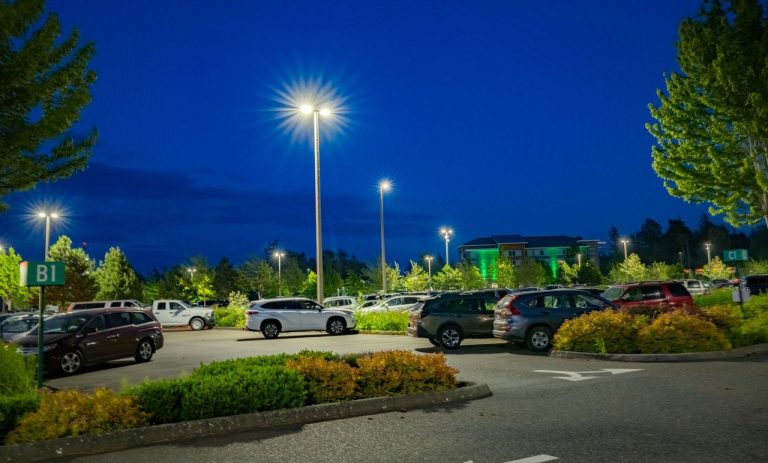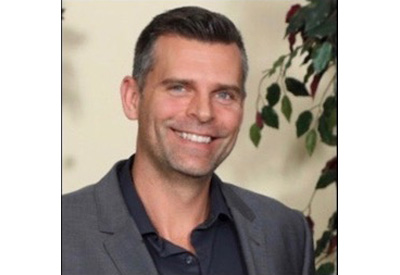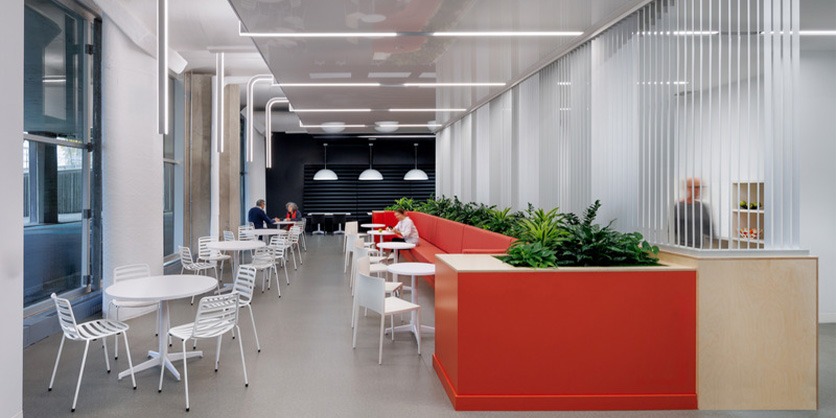Dayna Bradley on TPL Lighting, Her Leadership Approach, and Disruption
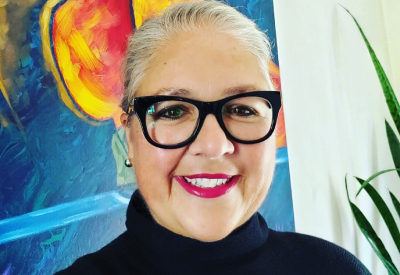
December 10, 2022
By Blake Marchand
TPL Lighting is an agency that has carved a unique niche in the industry by fostering a company culture based on disruption and new ideas, while also prioritizing happiness for its employees to drive collective success for the company. They represent 41 manufacturers that are exclusive to TPL Lighting. Working with lighting and interior designers, architects, and engineers their goal is to specify products that align with aesthetics, budget, and light output and then facilitate the installation through their network of electrical contractors.
The majority of their client base is in commercial tenant space, but they also do residential, industrial, retail, architectural, and institutional projects. They have been involved in some major landmark projects like the Riverside Bridge, 10 Dundas in Toronto, and Penmans Dam on the Grand River.
We spoke to company President, Dayna Bradley about her philosophy as a leader and the approach TPL Lighting has taken to find success.
A defining aspect of their uniqueness is The Adelaide Project. Led by Creative Lighting Specialist, Nawleen Kaur, The Adelaide Project is a fully renovated heritage home downtown Toronto that serves almost as a living lab for their lighting products to give clients a better understanding of how a particular product will look and perform in a particular application.
“Clients can come in and see actual lights installed in a place that has the feel of their own space. Having said that, we have residential customers, commercial clients that come in to look at spaces that they might be building in an office; we also have the opportunity for customers to come in who are doing educational facilities, exterior lighting projects – where they can see how our lights can be applied in their own application,” explained Bradley. Adding that, “It’s also a bit of a community hub,” said Bradley of The Adelaide Project, “we have a number of different community associations that would probably never communicate with each other come to The Adelaide Project and share the space together.”
Bradley noted that they have furniture partners that furnish The Adelaide Project on a rotating basis, and they will bring their own clients in to see their products in a decorated space.
“We’re using it as a place to bring communities together. It is, indirectly, a selling tool. Obviously, we want to sell lights, that’s what keeps our lights on. But the goal of The Adelaide Project isn’t to be driven by financial results, the goal is to bring together a community of people who have interests that are shared, to be able to think about things differently, to have a conversation about things that maybe they haven’t had a conversation about before; while doing that in a beautiful environment that’s surrounded by stunning lights.”
Bradley has a background in commercial office furniture, where she worked for 25-years. Joining TPL Lighting as President at the start of 2021 was her first experience in the lighting industry. Upon meeting with the owners Karolyn and Jennifer Pott – who, along with their brother Michael, took over ownership from their father, Andy Pott, founder, and former president of the company – Bradley said they immediately meshed.
“Within 15 minutes of the call I knew these were my people, and it mattered less to me about lighting than the people I was going to be working with, the business I was going to support, and the opportunity I was going to have as president to transform something and to make a mark.”
An important factor for Bradley is working with people she genuinely likes and respects and that bleeds into her philosophy as a leader.
“I need to be around people I like. I’m at a stage in my life where I’m not interested in faking it ever again, I’m not interested in pretending to like someone,” she said, “life’s too short. I knew right away that I liked them (Karolyn and Jennifer). They were engaging, they were funny; talking about business they were very, very smart. I could hear the strategy and their intention to do something different.”
Bradley said it’s refreshing to have a such a symbiotic relationship, “I’ve also never worked for women before,” she said, “it’s a completely different experience. As a woman now in this role as president, it’s really important that the people I work with and work for understand me and support that vision. They needed to be able to trust me enough to take their hands off the wheel and let me take it over, and they’ve been very good at doing that.”
Bradley said she has been enjoying the learning curve moving from furniture to lighting. Although she has transitioned into a new industry, Bradley said she is still operating in the same spaces, which gives her a different perspective on the industry, while also allowing her to draw on a network of contacts she has already established.
“I’m really enjoying the opportunity to learn something new, and to bring to the lighting industry the things that have made me successful on the furniture side.”
“Some of the challenges for me: it’s a very male dominated industry, lighting; It’s very rigid, it’s very ‘oh this is how we’ve always done it’ – ‘Dayna who are you to change things now, this is how it goes’ – I’m not that kind of person, I’m not the person to get behind a system that’s been in place just to say that’s how it goes. If somebody can benefit from us making a change then that’s what we should be doing.”
One of those changes for Bradley and TPL is a level of transparency in how they do business with their clients.
“I want our clients to almost have a chance to see behind the curtain so they understand our process, why things are a little more complicated than they might expect,” she said, “I also want them to realize we are their partners, and we can work with them to show them exactly how things work, why things are the way they are, and try to disrupt a very linear and stuck process to make it more intuitive and be more transparent, to gain more trust from our specifiers.”
Bradley is also inclined to apply that same approach to her management style.
“It’s frustrating that we are often perpetuating a system that deserves to be updated and I didn’t want that to be the case inside TPL. Just because you have a job in our project coordination team for example, doesn’t mean that’s where you always have to be. If that’s not the job that’s going to make you happy, then come to me and let’s work on it together.”
Her approach to leadership is about facilitating individual success and really promoting the importance of happiness for team members.
“I would say that my approach to leadership is, really, removing ego from all decisions and encouraging my team to be as successful and as happy as they can be. I want everyone to achieve their own greatness,” she said.
“Life is short, and I don’t want people to work at a place where they’re not happy. So how do we foster that happiness, where do we find that joy? Is it to reinvent something? Is it to decide what they’re doing isn’t the right fit for them? Maybe they can change things around. I want people to feel like the door is always open, that my mind is always open.”
The idea, obviously, is that individual success will lead to company success, as well as encourage innovation. As Bradley explains, TPL wants to disrupt standard practices in lighting to set themselves apart, but that starts with their internal company culture.
To close off our interview, we asked Bradley about some of the trends that are interesting to her and that are having an impact on what TPL Lighting is doing.
It goes without saying (although I am, of course, saying it) the pandemic has created a shift in how we approach work. The necessity to work from home and our ability to do so (for those of us with jobs applicable to remote work) changes the work-life dynamic. Bradley noted that, “when it’s so easy to be at home, work needs to be a destination. And a destination means that it needs to feel good. It needs to feel more like home, so that you feel like you want to go there or why bother with the commute?”
“Trends in office lighting, specifically, will be around warmer, softer light. As we move toward a more residential feel in corporate spaces, there will be a need for more decorative product to highlight common area spaces and more casual working environments. There will absolutely be a push on biophilic consideration (meaning there will be lot more plants).”
When it comes to new technologies, Bradley mentioned the work being done with BIOS.
“BIOS technology takes a very mind-blowing perspective on how to add technology to light fixtures to mimic the feelings of sunlight on the body.”
An example she provided was in maternity wards for NICUs, often newborns will grow in weight but not in size. A study with BIOS technology found that babies were growing in length and weight because the BIOS light mimics sunlight. Another example is in old age home for people who aren’t able to spend enough time outside. A BIOS study found that people’s sleeping patterns were more regulated, sleeping less during the day and more during the night – and it actually reduced accidents during the day.
Bradley said it’s something they are promoting with the manufacturers on their line card, “because we see that this is huge, huge thing going forward.”

